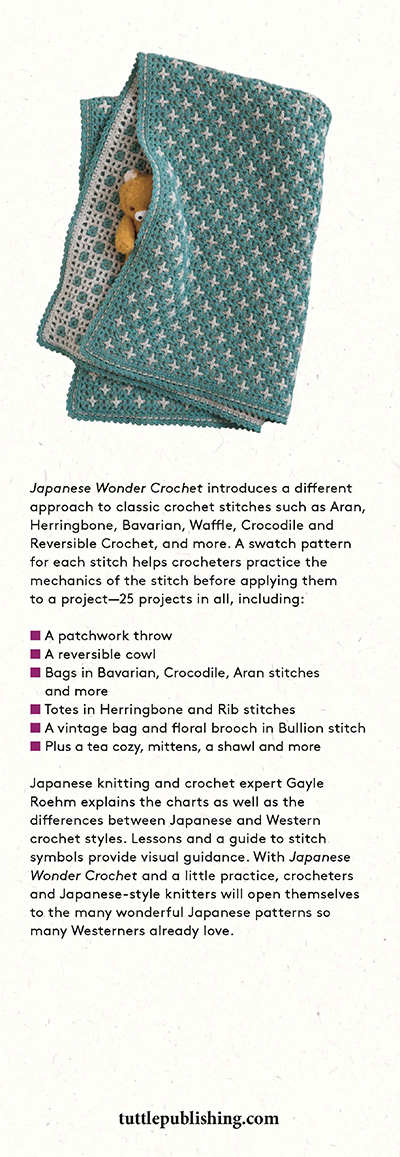 JAPANESE Wonder Crochet A Creative Approach to Classic Stitches
JAPANESE Wonder Crochet A Creative Approach to Classic Stitches  NIHON VOGUE
NIHON VOGUE  Introduction Welcome to Japanese Wonder Crochet! Whether youre a new crocheter or an expert, youll find in this book a range of techniques to play with, and some fun small projects for practice. The book was originally published in Japan, so youll see that instructions and patterns use a lot of graphics and illustrations, with less text than you may be used to. Most of the stitch patterns are shown entirely in symbols. Many of the symbols will be familiar to the experienced crocheter, because Japanese crochet symbols have largely become the international standard. Theyre all described in this book, in any case, including some variations. The book has three sections: Fifteen varied crochet techniques, introduced with photo tutorials, symbol charts and Point Lessons.
Introduction Welcome to Japanese Wonder Crochet! Whether youre a new crocheter or an expert, youll find in this book a range of techniques to play with, and some fun small projects for practice. The book was originally published in Japan, so youll see that instructions and patterns use a lot of graphics and illustrations, with less text than you may be used to. Most of the stitch patterns are shown entirely in symbols. Many of the symbols will be familiar to the experienced crocheter, because Japanese crochet symbols have largely become the international standard. Theyre all described in this book, in any case, including some variations. The book has three sections: Fifteen varied crochet techniques, introduced with photo tutorials, symbol charts and Point Lessons.
Patterns for small items using these techniques; theres at least one project per technique. Crochet basics in a section at the back. If your crochet skills are a little rusty, or you need a refresher on symbols, start here. Theres also information about joining, seaming and making cords. Throughout this translation, weve used American crochet terminology. Abbreviations that are used throughout are defined in the crochet basics section.
Hook sizes are specified in US, metric and Japanese sizes. Point Lessons The first section of the book introduces fifteen crochet techniques. For each technique, theres a photo, a chart and a Point Lesson, or photo tutorial. The Point Lessons are key to working the stitch patterns. Even if youre familiar with crochet symbols, be sure to read through the Point Lessons because they contain helpful hints and tips. The photos and written steps will guide you through the symbol chart and answer questions that you may have.
Work the stitch pattern as described in the Point Lesson before beginning a project. Pattern conventions A typical Japanese crochet pattern conveys most of the necessary information in graphics. Before you begin, read over all the pieces. There are schematics (line drawings of the item), stitch charts, and illustrations of finishing steps. Minimal text accompanies each of these parts. Youll see a summary of the construction at the beginning of the pattern, but be sure to read everything over before beginning.
Important instructions are often found near the appropriate section of the schematics or charts. All parts of the pattern work together to convey the information you need to make the item. Schematics are line drawings of the item. They include stitch and row counts, finished measurements, and other instructions. Study the schematic carefully to be sure you understand the construction. Symbol charts: Pay close attention to all the markings on the symbol charts. Symbol charts: Pay close attention to all the markings on the symbol charts.
Watch for row numbers, arrows showing the direction of rows, standing or turning chains as transitions between rows, and other hints that will help you complete the pattern. Line drawings illustrate finishing details: where to sew seams, where to attach buttons or handles, and how to position an edging, for instance. There can be some idiosyncrasies in the symbol charts. If theres a gap or ditch across a chart, you should continue as established. In addition, you may see that row numbering starts over when a new section/stitch pattern begins. Some patterns include variations to a standard symbol.
These are explained in the Point Lessons. For instance, Rib Crochet uses a normal sc symbol but its printed in bold to signal that its executed slightly differently; Herringbone Crochet uses a normal (slightly elongated) sc symbol with a slash across it. Yarn substitution Each pattern tells you the original Japanese yarn that was used in the item photographed. Weve included an estimate of the yards/meters needed for the project. Most likely, youll be substituting a different yarn. On , youll find a table containing information about the original yarns: weight, fiber content, and so on.
To make an appropriate yarn substitution: (a) Check the weight of the original yarn. All but one of these are in the Ravelry database, where you will find photos of the yarns. (b) Check the fiber content. Youll probably want a yarn with a similar fiber content so your project looks like the one photographed. (c) Work a gauge swatch with your selected yarn to ensure that you can match the specified stitch and row gauge for the pattern. The swatch is the most important step in making an effective substitution.
Wonder Crochet Patterns For this collection, we chose crochet stitch patterns that seem mysteriously complex, but theyre actually easy to work. The methods of picking up and combining stitches are fresh and exciting. Using these stitches will take your own designs to a new level. Weve included Point Lessons for each technique, where they may be hard to understand from the symbols alone. The yarns and colors of the swatches shown may differ from the projects.To make the Point Lessons easy to follow, the stitch counts as shown may differ from the projects. When you begin a project, please refer to the pattern itself for stitch and row counts. Crocheted Puff Entrelac Stitch Half double crochet puff stitches that look like the catkins of a hazel or pussy willow.
Be sure to join the stitches at each side as shown in the chart, so that the blocks will be square. Projects on Swatch 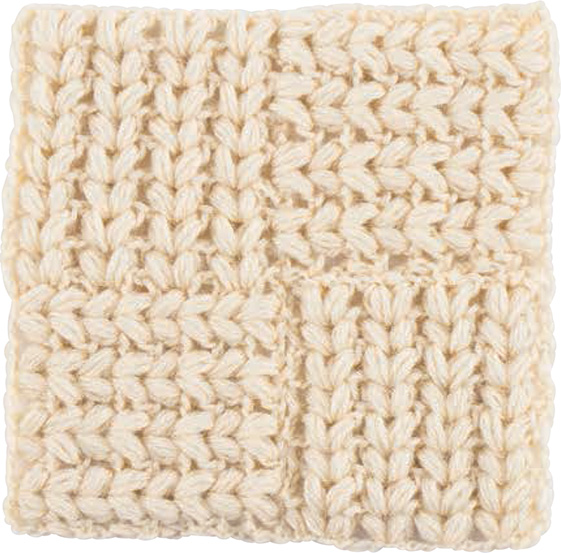 Pattern
Pattern 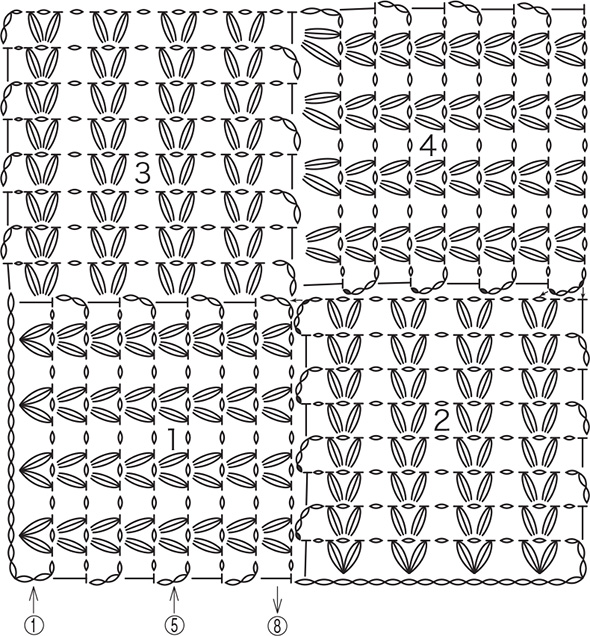 Maple Leaf Stitch The two-row pattern makes shapes that look like maple leaves.
Maple Leaf Stitch The two-row pattern makes shapes that look like maple leaves.
The plump round leaves are a variation on puff stitch.
The row of openwork between the leaves creates a light and airy feeling. Projects on Swatch 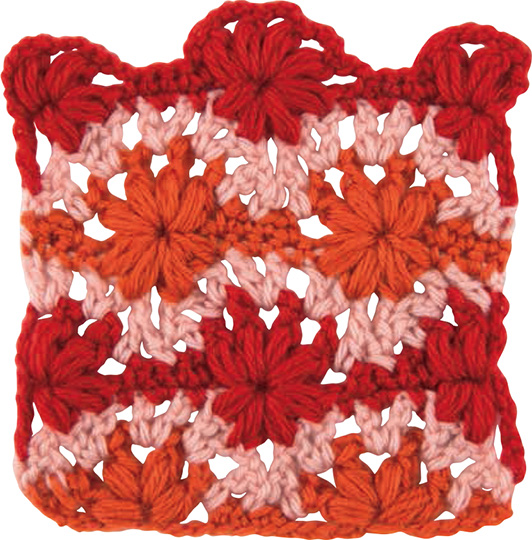 Pattern
Pattern 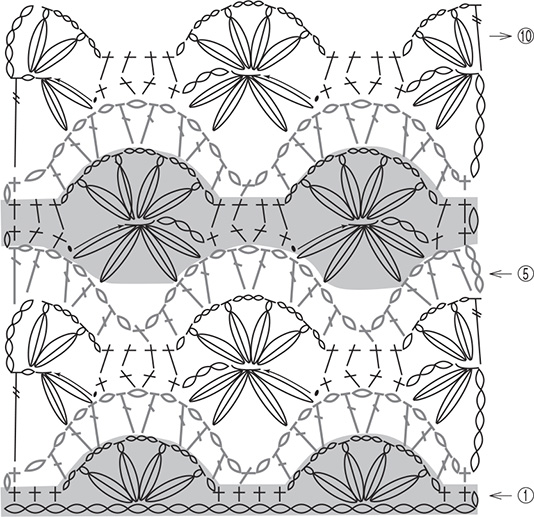 Crocheted Aran Stitch Aran patterns with post stitches make diamonds and cables, arranged with plenty of bobbles. The sharpness of the pattern comes from the three-dimensionality and size of the stitches. Projects on Swatch
Crocheted Aran Stitch Aran patterns with post stitches make diamonds and cables, arranged with plenty of bobbles. The sharpness of the pattern comes from the three-dimensionality and size of the stitches. Projects on Swatch 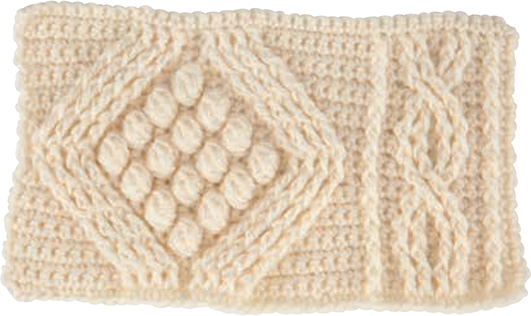 Pattern
Pattern  A. Zipper Pouch Created with a natural white yarn A simple pouch worked straight as a rectangle.
A. Zipper Pouch Created with a natural white yarn A simple pouch worked straight as a rectangle.
The fabric makes a grid pattern, and the aligned puff stitches form a pretty texture. Easily completed in one color. DesignTomo SugiyamaYarn usedHamanaka Sonomono SportInstructions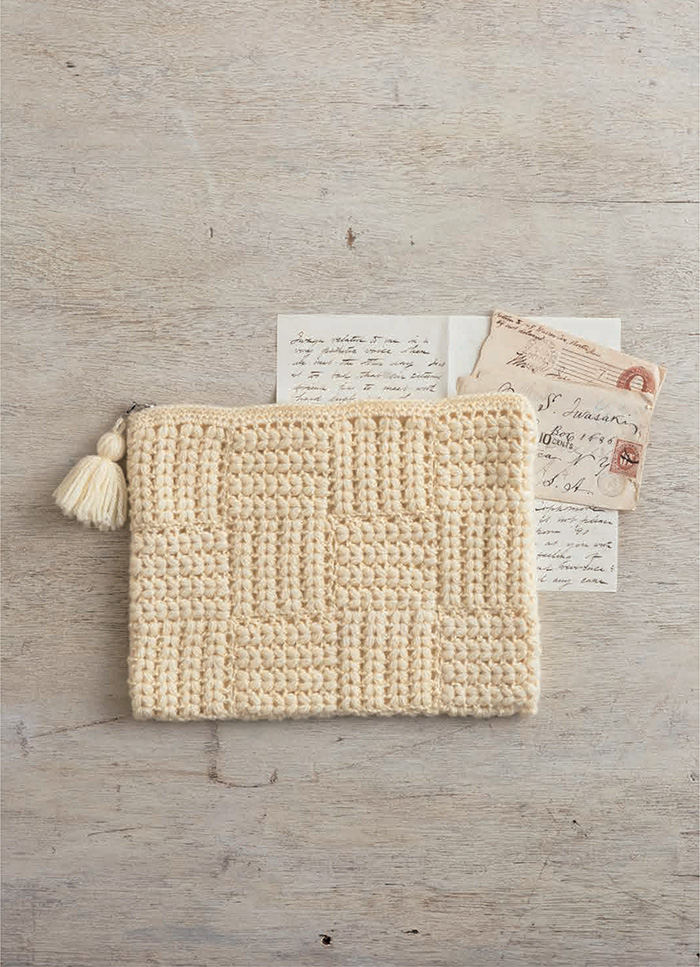
Next page
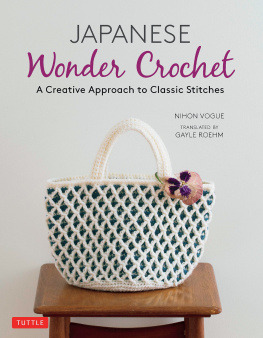
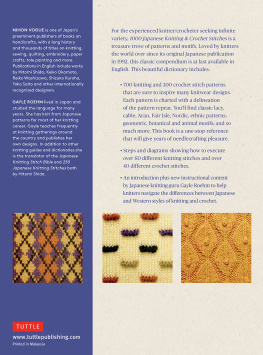
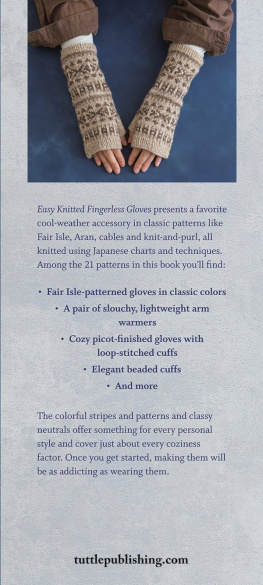
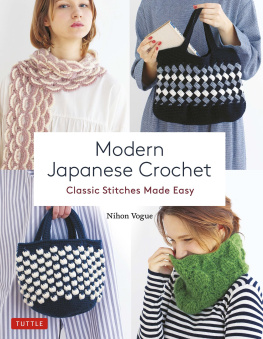
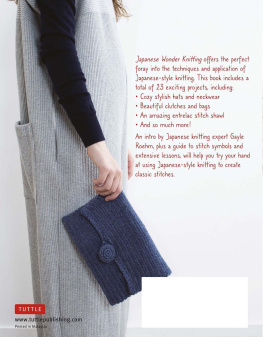
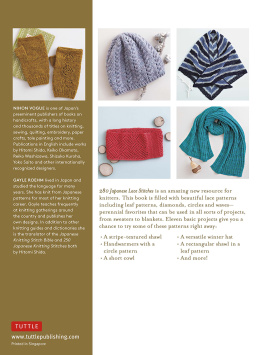
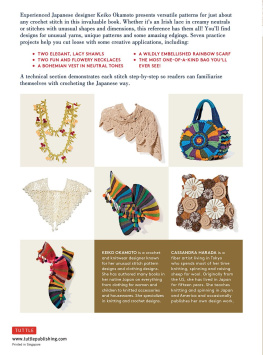
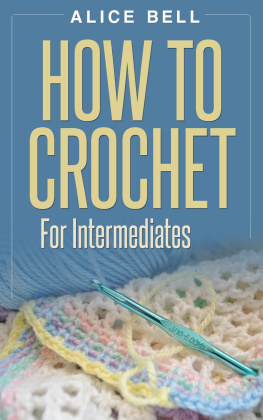

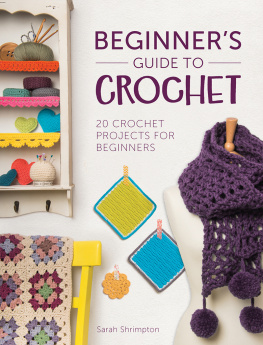

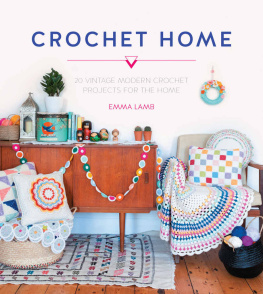

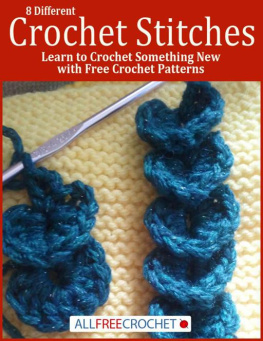
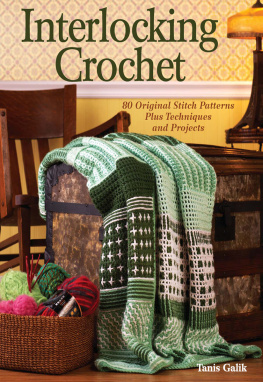
 JAPANESE Wonder Crochet A Creative Approach to Classic Stitches
JAPANESE Wonder Crochet A Creative Approach to Classic Stitches  NIHON VOGUE
NIHON VOGUE  Introduction Welcome to Japanese Wonder Crochet! Whether youre a new crocheter or an expert, youll find in this book a range of techniques to play with, and some fun small projects for practice. The book was originally published in Japan, so youll see that instructions and patterns use a lot of graphics and illustrations, with less text than you may be used to. Most of the stitch patterns are shown entirely in symbols. Many of the symbols will be familiar to the experienced crocheter, because Japanese crochet symbols have largely become the international standard. Theyre all described in this book, in any case, including some variations. The book has three sections: Fifteen varied crochet techniques, introduced with photo tutorials, symbol charts and Point Lessons.
Introduction Welcome to Japanese Wonder Crochet! Whether youre a new crocheter or an expert, youll find in this book a range of techniques to play with, and some fun small projects for practice. The book was originally published in Japan, so youll see that instructions and patterns use a lot of graphics and illustrations, with less text than you may be used to. Most of the stitch patterns are shown entirely in symbols. Many of the symbols will be familiar to the experienced crocheter, because Japanese crochet symbols have largely become the international standard. Theyre all described in this book, in any case, including some variations. The book has three sections: Fifteen varied crochet techniques, introduced with photo tutorials, symbol charts and Point Lessons. Pattern
Pattern  Maple Leaf Stitch The two-row pattern makes shapes that look like maple leaves.
Maple Leaf Stitch The two-row pattern makes shapes that look like maple leaves. Pattern
Pattern  Crocheted Aran Stitch Aran patterns with post stitches make diamonds and cables, arranged with plenty of bobbles. The sharpness of the pattern comes from the three-dimensionality and size of the stitches. Projects on Swatch
Crocheted Aran Stitch Aran patterns with post stitches make diamonds and cables, arranged with plenty of bobbles. The sharpness of the pattern comes from the three-dimensionality and size of the stitches. Projects on Swatch  Pattern
Pattern  A. Zipper Pouch Created with a natural white yarn A simple pouch worked straight as a rectangle.
A. Zipper Pouch Created with a natural white yarn A simple pouch worked straight as a rectangle.